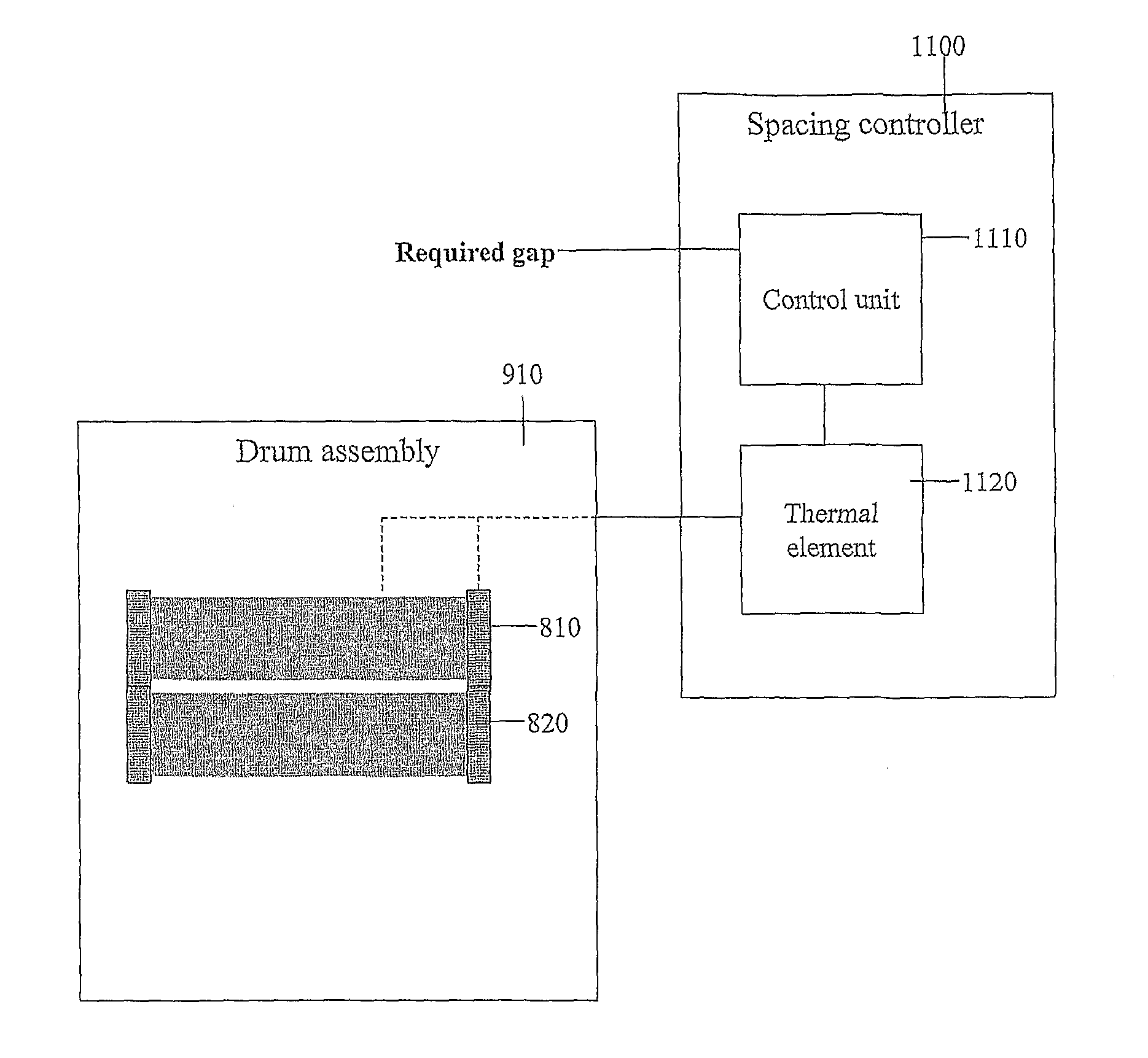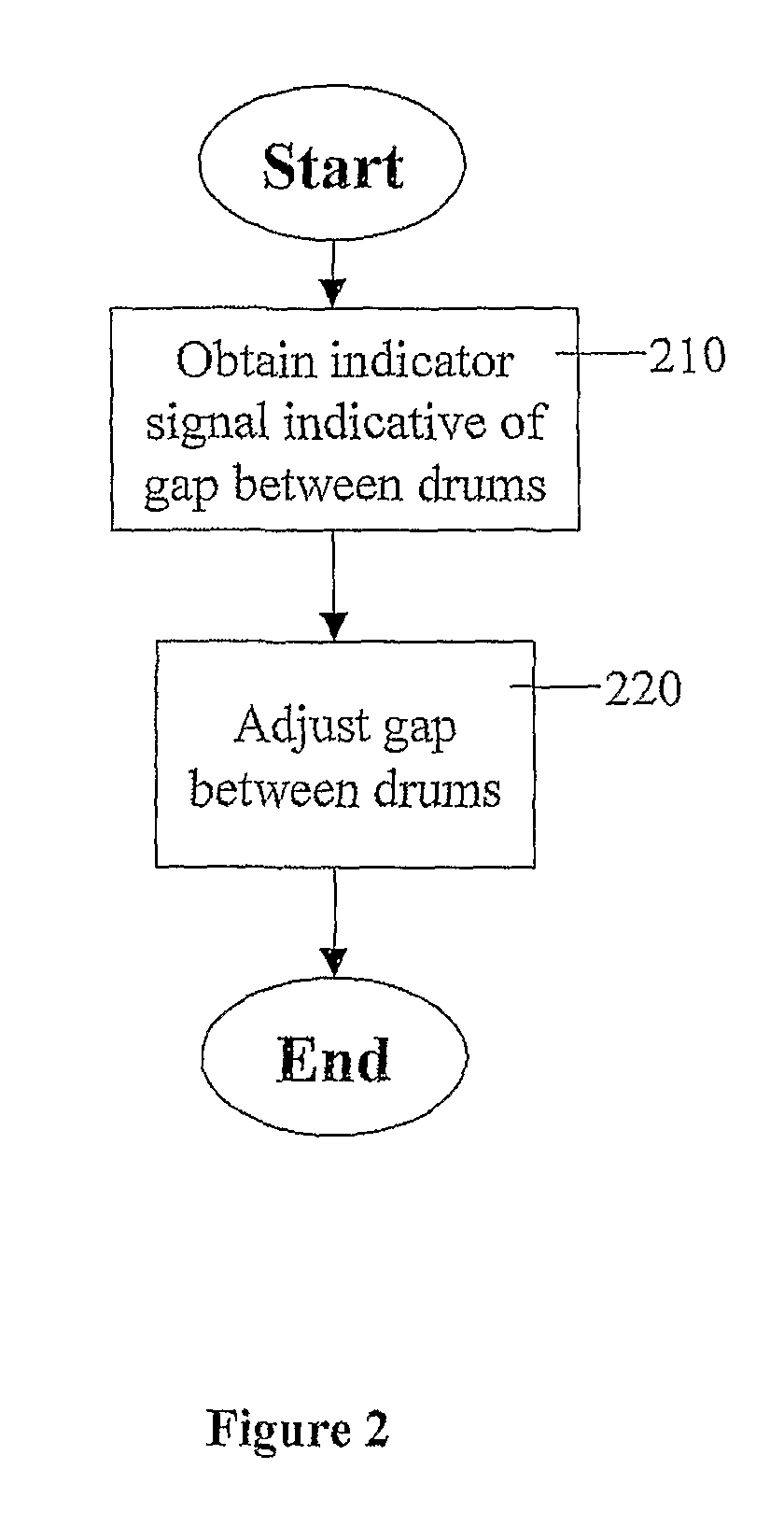Automatic adjustment of printer drum spacing
a printer and drum technology, applied in the direction of electrographic process, electrographic process apparatus, instruments, etc., can solve the problems of reducing the lifetime of the blanket, reducing the overall machine performance parameters, and reducing the performance of the printing press
- Summary
- Abstract
- Description
- Claims
- Application Information
AI Technical Summary
Benefits of technology
Problems solved by technology
Method used
Image
Examples
first embodiment
[0057]The printer may be an electrophotographic printer. In a first embodiment, the method adjusts the first transfer pressure, in which case the two drums are the electrostatic (PIP) drum and the ITM drum. In an alternate embodiment, the method adjusts the second transfer pressure, in which case the two drums are the impression drum and the intermediate transfer (ITM) drum.
[0058]In step 210, a signal indicative of the pressure (i.e. force) between the two drums is obtained (denoted herein the indicator signal).
[0059]In a first embodiment, the indicator signal is obtained by creating a potential difference between the two drums and measuring the current flow between the drums, as described in more detail below. In a second embodiment, the indicator signal is obtained by measuring the pressure between the two drums by any method known in the art, for example utilizing a strain measurement element (such as a strain gage or load cell) as described below.
[0060]In step 220, the gap betwe...
second embodiment
[0087]Reference is now made to FIG. 9b, which is a simplified illustration of a printer with automatic drum spacing adjustment, according to the present invention. The present embodiment is directed to image transfer from the ITM drum to impression drum 920.1. Strain measurement elements 540.1 and 540.2 (strain gage 540.1 is hidden by impression drum 920.1) provide two input signals (denoted Input 1 and Input 2) to control unit 950. The input signals indicate the strain on the supporting arms of impression drum 920.1. Control unit 950 analyzes the two input signals, and derives a respective control signal (denoted Output 1 and Output 2) for each of the stepping motors, 960.1 and 960.2, in order to adjust the gap between the ITM drum and impression drum 920.1.
[0088]In a further embodiment, gap adjustment based on current flow is performed by a standalone controller. Reference is now made to FIG. 10, which is a simplified block diagram of a drum spacing controller, according to a firs...
PUM
 Login to View More
Login to View More Abstract
Description
Claims
Application Information
 Login to View More
Login to View More - R&D
- Intellectual Property
- Life Sciences
- Materials
- Tech Scout
- Unparalleled Data Quality
- Higher Quality Content
- 60% Fewer Hallucinations
Browse by: Latest US Patents, China's latest patents, Technical Efficacy Thesaurus, Application Domain, Technology Topic, Popular Technical Reports.
© 2025 PatSnap. All rights reserved.Legal|Privacy policy|Modern Slavery Act Transparency Statement|Sitemap|About US| Contact US: help@patsnap.com



